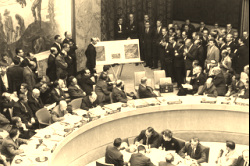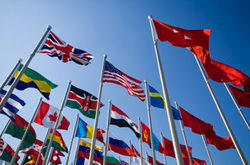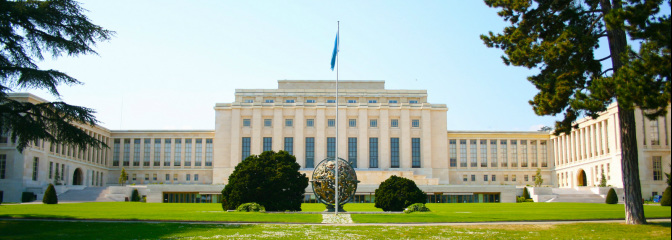The Beginings

In 1945, when World War II reached its end, there was a need of Union between the countries from the whole world. 51 countries agreed in the consolidation of an international force in charge of the relations between them. In more than 65 years, the UN has treated topics such as economy, education, health... based on a paceful correlation between the actual 193 members.
The United Nations' headquarter has been located in New York since 1952; also, there are three buildings serving as "sub" headquarters in Swintzerland, Austria and Kenya. These headquarters are extraterritorial land, which means that the buildings of the UN are not part of any country.
The United Nations' headquarter has been located in New York since 1952; also, there are three buildings serving as "sub" headquarters in Swintzerland, Austria and Kenya. These headquarters are extraterritorial land, which means that the buildings of the UN are not part of any country.
How it Works

The main base of the UN is the UN charter, a document signed in 1945 by the first members of the organization; in its content the nations commit to follow the objectives specified in the document, they are also forced to accomplish those objectives following the UN processes.
The topics to disscus in the UN are divided in six basic departements: General Assembly, Security Council, Economic and Social Council, Trusteeship Council, International Court of Justice, and Secretariat. Actually, there are more than this primary divisions (15 more) but, those are the ones listed in the UN charter.
Basically, the UN is divided hierarchically in this order:
*Committees
*Commissions
*Boards
*Councils and Panel
*Working Groups and other
The UN also works with some NGO, has a project to reinforce the civil voice in democratic countries. Also it provides help to different CSO (civil society organizations). The point of the whole thing is to provide an environment of help, collaboration and partnership between the organizations.
The topics to disscus in the UN are divided in six basic departements: General Assembly, Security Council, Economic and Social Council, Trusteeship Council, International Court of Justice, and Secretariat. Actually, there are more than this primary divisions (15 more) but, those are the ones listed in the UN charter.
Basically, the UN is divided hierarchically in this order:
*Committees
*Commissions
*Boards
*Councils and Panel
*Working Groups and other
The UN also works with some NGO, has a project to reinforce the civil voice in democratic countries. Also it provides help to different CSO (civil society organizations). The point of the whole thing is to provide an environment of help, collaboration and partnership between the organizations.
In Brief
All this heriarchy, organization, burocracy, is the performance of a single law known as the Rule of law of the UN. This, merged with the UN charter is the scence itself of UN.
In the words of the United Nation's general secretary:
In the words of the United Nation's general secretary:
A principle of governance in which all persons, institutions and entities, public and private, including the State itself, are accountable to laws that are publicly promulgated, equally enforced and independently adjudicated, and which are consistent with international human rights norms and standards"
(UN's Secretary-General, 2004)

 RSS Feed
RSS Feed